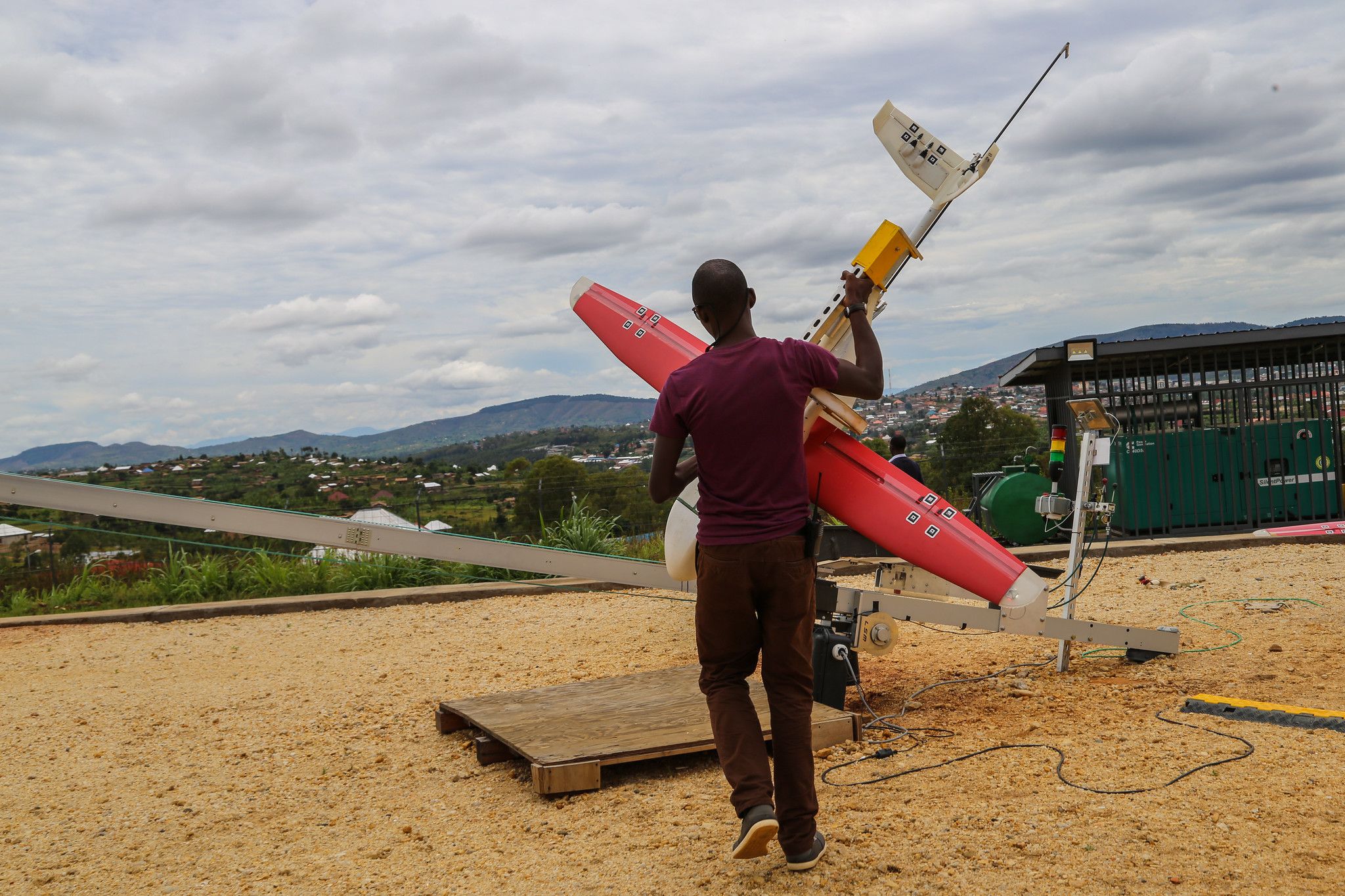
Service drones streamline health supply chains in the Global South
By ITU News
More than two years into the COVID-19 pandemic, enough vaccines have been produced globally to drive down transmission and save lives. Yet the coronavirus continues moving faster than global distribution, adding another layer of precarity for the world’s most vulnerable populations.
As developed countries lift restrictions and issue booster shots, many people in low-income countries have yet to receive a first dose of COVID vaccine. Further, a lack of quality control, security, and key infrastructure such as cooling systems impede the effectiveness of vaccines.
Automating humanitarian supply chains with drones can alleviate some of these problems, said Miki Sofer at a recent AI for Good webinar hosted by the International Telecommunication Union (ITU). Her company, Zipline, has been using unmanned aerial vehicles (UAVs) to streamline global health distribution chains since 2016.
Data-driven solutions
Beyond drones, Zipline has created an end-to-end supply chain automation system that can deliver routine vaccines, life-saving supplies, or any centralized stock from logistics bases to any point in a humanitarian emergency zone in under an hour. “In Africa, a delivery goes out every three minutes,” said Sofer.
Drones add value where insecure roads make shipping unreliable, especially by eliminating the need for military convoys to escort ground deliveries.
During the pandemic, Ghana has benefitted from Zipline’s aerial logistics. While COVID-19 cases surged, the country needed routine vaccinations for other diseases – especially for children. But lockdowns prevented healthcare professionals from obtaining vaccine supplies, mostly stored offsite.
Zipline distributed more than 5 million doses of routine vaccines to 1,785 health facilities across Ghana, helping limit disruptions to child vaccine schedules while maintaining cold-chain quality, Sofer said.
Leveraging locals
Zipline’s operations, which are always government-led, currently employ 400 people across Africa, with each new distribution hub adding 40 local jobs, according to Sofer.
For Patrick Meier, cofounder of WeRobotics, local talent is a key ingredient to build successful “drones-as-a-service” ecosystems. Committed to local autonomy, WeRobotics cedes market share to its spin-offs, members of the Flying Labs network.
By providing “tech agnostic” health robotics, Meier’s company aims to support local cargo drone ecosystems and incubate service drone start-ups in developing countries.
“Our role is to facilitate knowledge exchange and tech transfer,” Meier said, explaining how the model allocates 45 per cent of funding and resources to local organizations and partners.
Flying Labs network members decide, Independently of WeRobotics, which sectors to engage in, which projects to pursue, and how to build teams. Examples include disaster response in Nepal, climate adaptation in Panama, and humanitarian logistics in Madagascar.
Putting it into practice
Heidi Sampag-Abiad of Philippines Flying Labs has witnessed first-hand how last-mile delivery using AI-powered drones can benefit remote villages lacking basic healthcare services.
For Binacalan, an indigenous island village in the Philippines, heavy rainfall turns an 11-kilometre road trip into a 2-hour odyssey, as local motorcycles struggle to cross the muddy terrain. The island, which itself takes 30 minutes to reach by boat, once faced a dire shortage of oral rehydration solution.
Inter-island vaccine delivery took only 8 minutes by drone, Sampag-Abiad said. Drones soon achieved similar delivery times for Janssen (Johnson & Johnson) COVID vaccines, with temperature monitors ensuring successful cold-chain storage.
Another village in the mountains benefited from a rapid two-way delivery, as drones brought medicine and vaccines and then left with blood and water samples. The latter came back positive for E. coli – a test not usually done due to a lack of cold-chain logistics, she explained.
To make these remote deliveries, Philippine Flying Labs uses off-the-shelf drones customized with WeRobotics software. The organization was the first in the Philippines to obtain an official permit for drone deliveries, noted Sampag-Abiad.
In addition to GPS (Global Positioning System) and good connectivity, the operation relies on locally trained drone pilots. “Cooperation between multiple stakeholders including funders, government, humanitarian organizations, and the military – were essential to the programme’s sustainability,” she said.
Limitations to leapfrogging
Drone excel with specific, targeted deliveries, rather than massive cargo deliveries of items like mosquito nets.
“Drones have a role to play in leapfrogging parts of the world that haven’t had the benefits of stronger infrastructure or data technology, similar to what we saw with cell phones,” Sofer said.
Performance-based finance models help determine which technologies to scale up for which kinds of delivery.
Sampag-Abiad outlines four main challenges for drones-as-a-service in the Global South:
- Creating robust legislative and regulatory frameworks.
- Building tech expertise in localized ecosystems, with drone pilots in high demand.
- High upfront infrastructure costs, before regular deliveries bring returns on investment in local communities.
- Ensuring end-user acceptance.
“To get buy-in, make sure the public accepts what you are doing,” she says.
Cultivating good working relationships with local medical workers is equally critical, as local healthcare providers may feel threatened by, or question the need for, delivery drones.
“It’s crucial to communicate these drones are not replacing existing technology,” said Sampag-Abiad. “They are enhancing, as an alternative if bad weather makes transport unavailable.”
Supply chain automation helps get the right products to the right place at the right time, in the right condition. In Sofer’s view, these are crucial elements to achieve United Nations Sustainable Development Goal (SDG) 3: Good health and well-being.
Image credit: : Sarah Farhat via World Bank/Flickr
